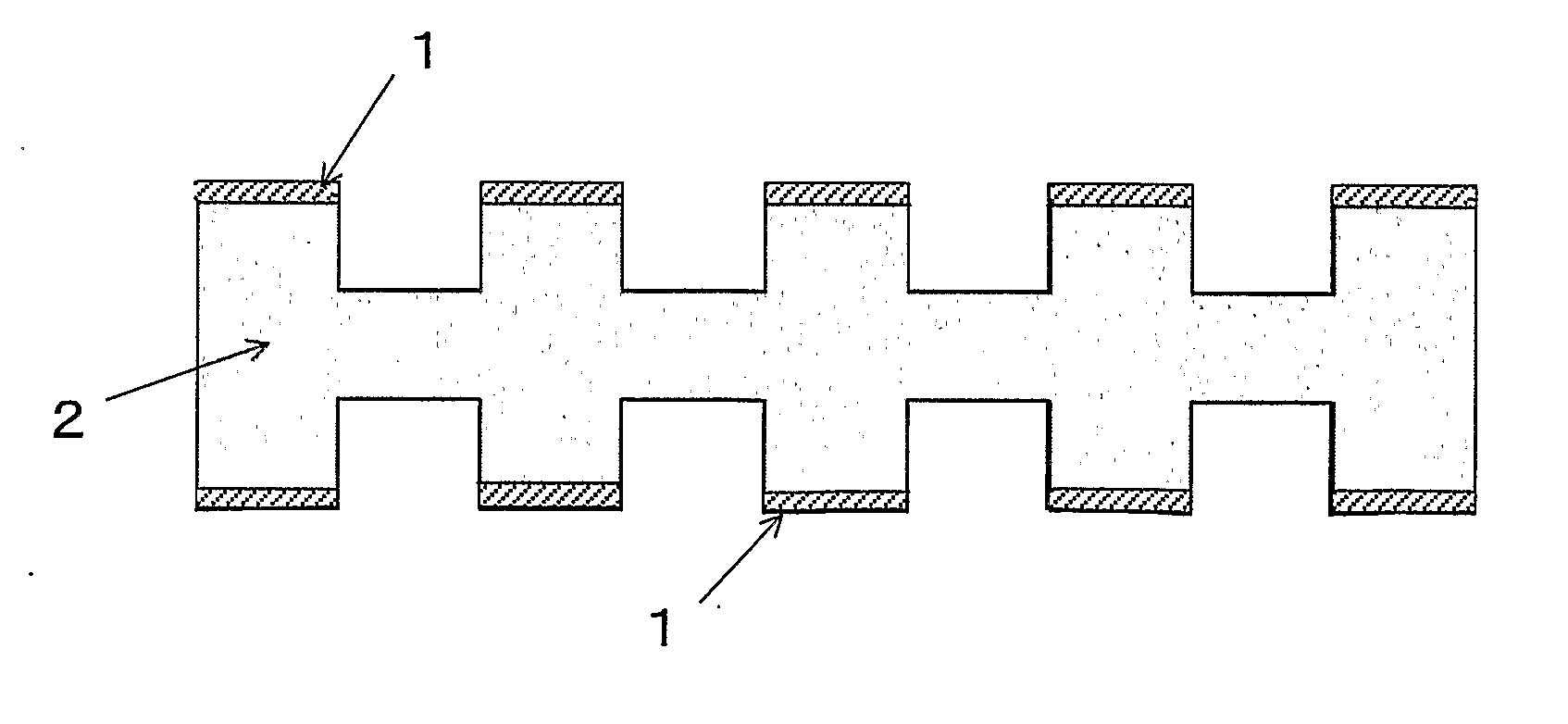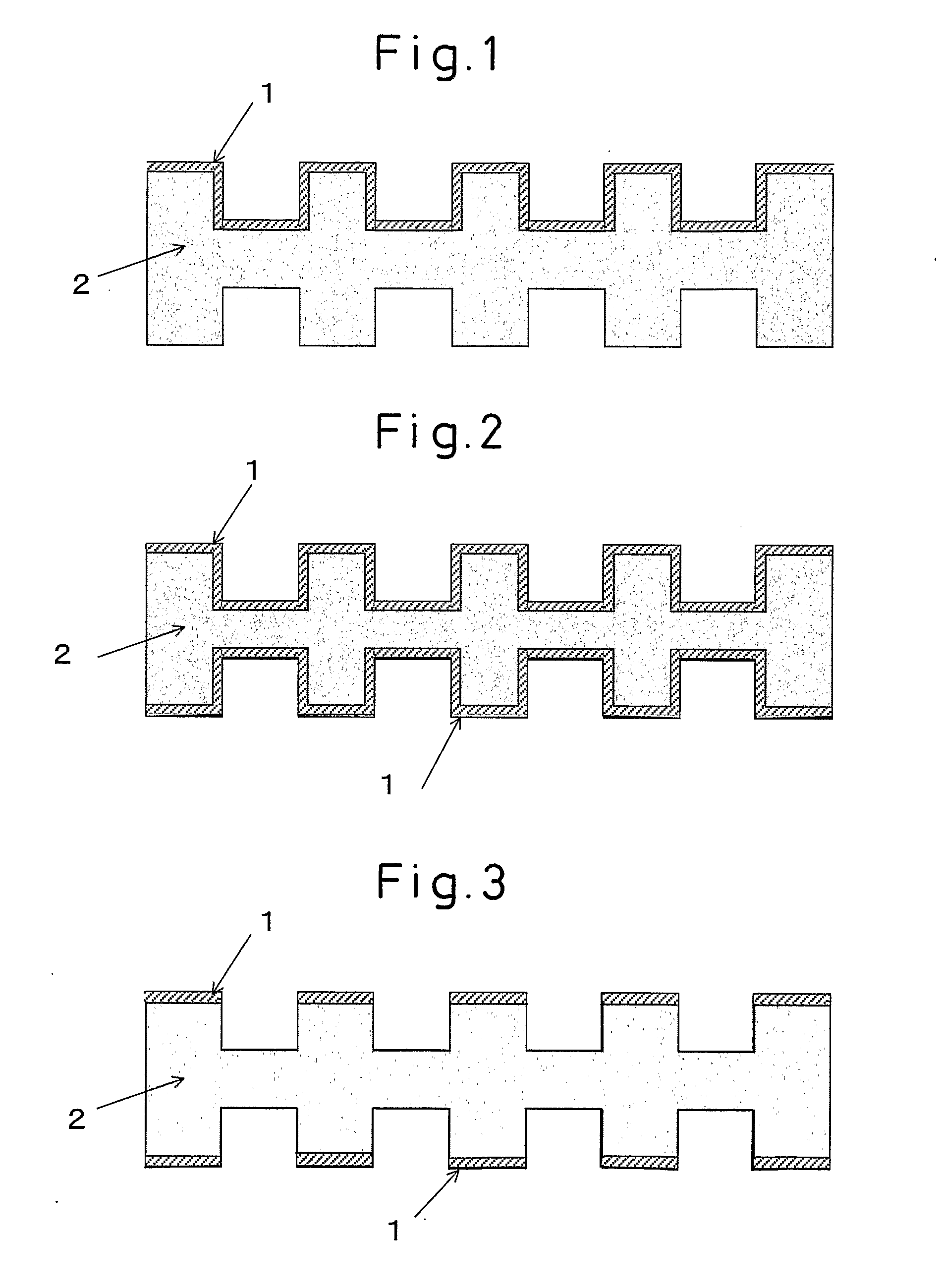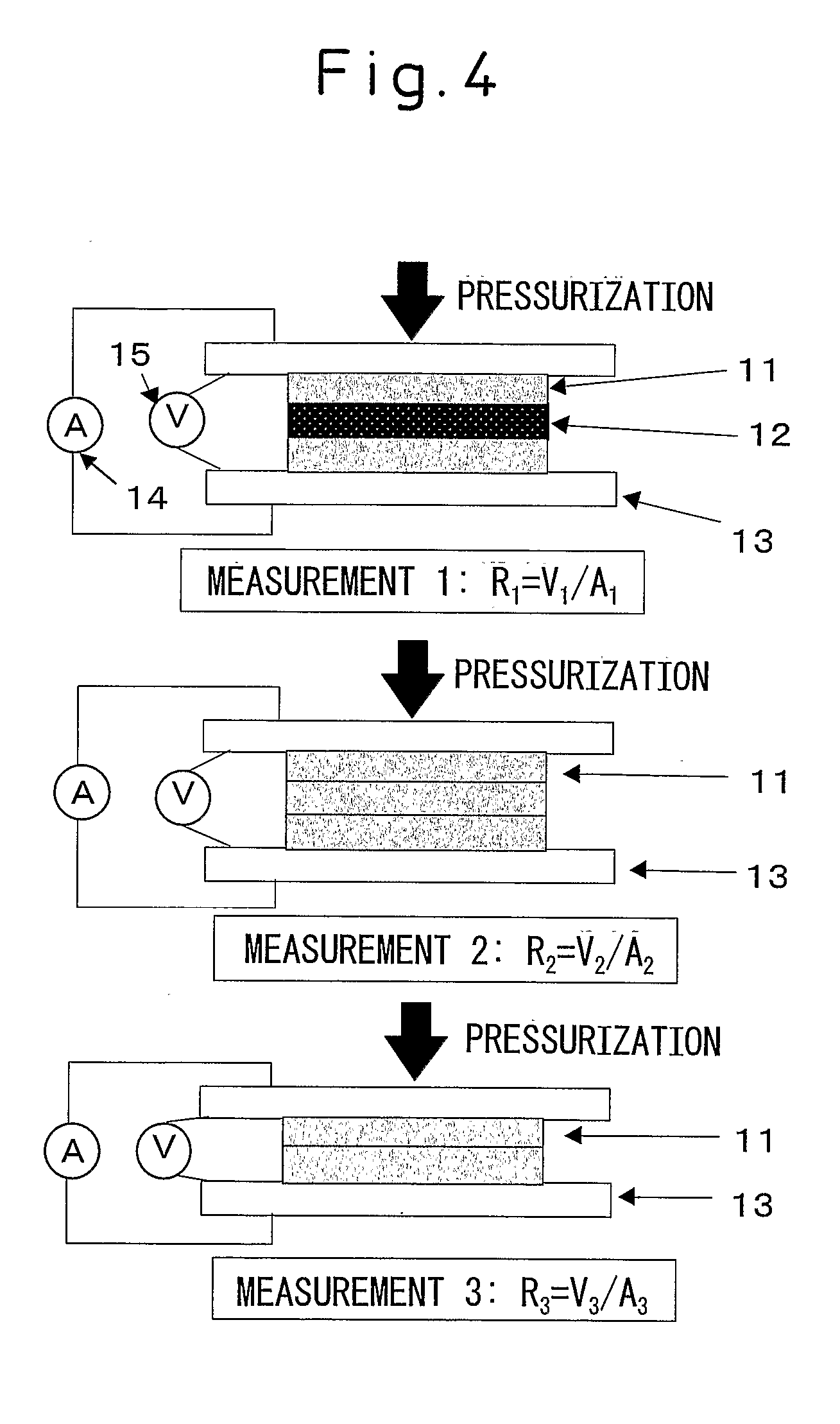Fuel cell separator and production process thereof
a technology of fuel cell separator and production process, which is applied in the field of separator, can solve the problems of high durability, difficult to obtain high durability, and difficult to cover metal, and achieve the effects of reducing contact resistance and penetration resistance, reducing contact resistance, and increasing electroconductivity
- Summary
- Abstract
- Description
- Claims
- Application Information
AI Technical Summary
Benefits of technology
Problems solved by technology
Method used
Image
Examples
example 1
[0168] The composition A1 and the composition B1 as shown in the above Table 2 were respectively shaped into sheets having a width of 100 mm at a temperature of 250° C., 40 rpm by using a 40φ (diameter) single-screw extruder (VS 40 / 26 Bent Type, mfd. by Tanabe Plastic Machine Co., Ltd.). Each of the resultant sheets was rolled at a temperature of 180° C. by use of rolls, so that the thickness of the composition A1 was adjusted to 0.6 mm, and the thickness of the composition B1 was adjusted to 1.8 mm. Then, these sheets were laminated in order of A1 / B1 / A1, so as to provide a laminated product having such a structure, and charged into a mold capable of providing a flat plate having a size of 100 mm×100 mm×1.5 mm, and was preheated at 240° C. for 3 min., and thereafter press-heated under a pressure of 15 MPa for 3 min., by using a 50t-compression molding machine. Then, the mold was cooled under the conditions of a temperature of 25° C., and a pressure of 15 MPa for 2 min., by using a c...
examples 2-5
[0169] The compositions A2-A5 and the composition B1 as shown in the above Table 2 were respectively shaped into sheets having a width of 100 mm at a temperature of 250° C., 40 rpm by using a 40φ (diameter) single-screw extruder (VS 40 / 26 Bent Type, mfd. by Tanabe Plastic Machine Co., Ltd.). Each of the resultant sheets was rolled at a temperature of 180° C. by use of rolls, so that the thickness of each of the compositions A2-A5 was adjusted to 0.4 mm, and the thickness of the composition B1 was adjusted to 2.2 mm. Then, these sheets were laminated in order of A2 / B1 / A2, A3 / B1 / A3, A4 / B1 / A4, order of A5 / B1 / A5, respectively, so as to provide a laminated product having each of such structures, and charged into a mold capable of providing a flat plate having a size of 100mm×100 mm×1.5 mm, and was preheated at 240° C. for 3 min., and thereafter press-heated under a pressure of 15 MPa for 3 min., by using a 50t-compression molding machine. Then, the mold was cooled under the conditions of...
example 6
[0170] The composition A6 and the composition B2 as shown in the above Table 2 were respectively shaped into sheets having a width of 100 mm at a temperature of 220° C., 40 rpm by using a 40φ (diameter) single-screw extruder (VS 40 / 26 Bent Type, mfd. by Tanabe Plastic Machine Co., Ltd.). Each of the resultant sheets was rolled at a temperature of 185° C. by use of rolls, so that the thickness of the composition A6 was adjusted to 0.4 mm, and the thickness of the composition B2 was adjusted to 2.2 mm. Then, these sheets were laminated in order of A6 / B2 / A6, so as to provide a laminated product having such a structure, and charged into a mold capable of providing a flat plate having a size of 100 mm×100 mm×1.5 mm, and was preheated at 220° C. for 3 min., and thereafter press-heated under a pressure of 15 MPa for 3 min., by using a 50t-compression molding machine. Then, the mold was cooled under the conditions of a temperature of 25° C., and a pressure of 15 MPa for 2 min., by using a c...
PUM
| Property | Measurement | Unit |
|---|---|---|
| Temperature | aaaaa | aaaaa |
| Length | aaaaa | aaaaa |
| Fraction | aaaaa | aaaaa |
Abstract
Description
Claims
Application Information
 Login to View More
Login to View More - R&D
- Intellectual Property
- Life Sciences
- Materials
- Tech Scout
- Unparalleled Data Quality
- Higher Quality Content
- 60% Fewer Hallucinations
Browse by: Latest US Patents, China's latest patents, Technical Efficacy Thesaurus, Application Domain, Technology Topic, Popular Technical Reports.
© 2025 PatSnap. All rights reserved.Legal|Privacy policy|Modern Slavery Act Transparency Statement|Sitemap|About US| Contact US: help@patsnap.com



